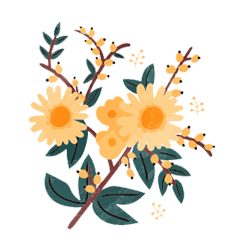Floral Design as Art: Pushing Boundaries
Sponsored Listings


In today’s fast-paced world, the importance of connecting with nature for our physical and mental well-being has become increasingly evident. Ecotherapy, also known as nature therapy or green therapy, harnesses the healing power of nature to promote health and healing. In this blog, we’ll explore the concept of ecotherapy and discuss innovative ways for patient care technicians to incorporate nature elements into healthcare environments to enhance patient comfort and healing.
Understanding Ecotherapy
Ecotherapy is rooted in the belief that spending time in nature has profound therapeutic effects on our mind, body, and spirit. Research has shown that exposure to natural environments can reduce stress, lower blood pressure, boost mood, and improve overall well-being. Whether it’s a stroll through a park, gardening, or simply sitting by a window with a view of nature, the benefits of ecotherapy are undeniable.
Incorporating Nature into Healthcare Environments
Patient care technicians play a crucial role in creating healing environments that support patients’ recovery and well-being. By incorporating elements of nature into healthcare settings, patient care technicians can enhance the patient experience and contribute to positive health outcomes. Here are some innovative ways to incorporate ecotherapy into patient care:
Healing Gardens: Design and maintain healing gardens or outdoor spaces within healthcare facilities where patients, families, and staff can immerse themselves in nature. These gardens can feature a variety of plants, flowers, and seating areas to provide a peaceful retreat for relaxation and reflection.
Nature-Inspired Artwork: Decorate patient rooms and common areas with nature-inspired artwork, photographs, or murals that evoke feelings of tranquility and connection to the natural world. Art can serve as a source of inspiration and comfort for patients during their hospital stay.
Natural Light and Views: Maximize access to natural light and outdoor views in healthcare environments to create a sense of openness and connection to the outdoors. Position patient rooms and communal spaces to take advantage of daylight and incorporate windows or skylights wherever possible.
Indoor Plants: Bring the benefits of nature indoors by incorporating potted plants and greenery into healthcare settings. Indoor plants not only improve air quality but also contribute to a calming atmosphere and provide a sense of vitality and rejuvenation.
Nature-Based Activities: Organize nature-based activities and programs for patients, such as guided nature walks, horticulture therapy sessions, or outdoor yoga classes. These activities offer opportunities for patients to engage with nature and experience its therapeutic benefits firsthand.
Sensory Gardens: Create sensory gardens with plants that stimulate the senses, such as fragrant herbs, textured foliage, and colorful flowers. These gardens can provide sensory stimulation and relaxation for patients with sensory impairments or cognitive challenges.
Nature Sounds: Incorporate nature sounds, such as birdsong, flowing water, or rustling leaves, into healthcare environments through audio recordings or ambient sound machines. These sounds can create a calming ambiance and mask unwanted noise, promoting a restful environment for patients.
By integrating ecotherapy principles into patient care practices, patient care technicians can contribute to holistic healing and wellness. By fostering a deeper connection to nature, healthcare environments can become nurturing spaces that support patients’ physical, emotional, and spiritual needs.

 Floral Design Trends 2024
Floral Design Trends 2024